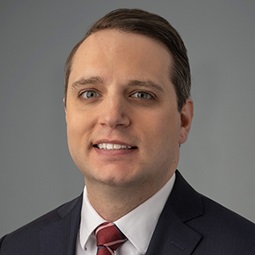Contributed by Doron P. Kenter.
“I’m sorry, Dave. I’m afraid I can’t do that.” – HAL 9000, 2001: A Space Odyssey
The automatic stay set forth in section 362 of the Bankruptcy Code is one of the hallmarks of bankruptcy – if debtors are not afforded a breathing spell within which to organize their affairs, they stand little chance of successfully resolving their affairs, be it through a liquidation or a reorganization. Indeed, the effort to impose order on creditors seeking payment of claims was likely one of the main drivers of the creation of the modern bankruptcy regime. To ensure that the automatic stay is honored, section 362(k)(1) of the Bankruptcy Code provides for recovery of costs by a debtor in the event that a creditor willfully violates the automatic stay. Those damages can include attorneys’ fees and, in some cases, punitive damages. The automatic stay is a force to be reckoned with, and its bar on premature acts to assert prepetition claims is not to be taken lightly.
So what about non-human actors? As the Supreme Court has taught us over the past few years, though, people aren’t just “people.” Can automated systems violate the stay? And if so, can such a violation be “willful?”
In a recent decision, the United States Bankruptcy for the District of Wyoming considered (i) whether a computer-generated notice of collection action violates the automatic stay; (ii) if such a notice constitutes a violation of the stay, whether the delivery of the notice can constitute a “willful” violation of stay; and (iii) what relief is available to corporate debtors when they become victims of such violations.
Background
In In re Wedco Manufacturing, Inc., the United States Small Business Administration was one of the debtor’s undisputed creditors. Even though the SBA was aware of the commencement of Wedco’s bankruptcy case, its loan servicing center issued a computer-generated notice to the debtor “CONCERNING POSSIBLE U.S. TREASURY COLLECTION ACTIONS FOR YOUR DELINQUENT GOVERNMENT DEBT…” After the debtor received the notice, its counsel filed a motion for contempt against the SBA, arguing that the delivery of the notice was an attempt to assert prepetition claims and constituted a willful violation of the automatic stay. In response, the SBA acknowledged that its computer system had sent an improper collection notice to Wedco – even though the SBA had attempted to stop collection actions against Wedco and to pursue collection measures against Wedco’s guarantors instead.
Analysis
To establish a willful violation of the automatic stay, the debtor must prove that the creditor knew of the automatic stay and intended the actions that constituted the violation. Notably, no specific intent to violate the stay is required. In response to the debtor’s motion, the SBA argued that it had taken no “willful” action, and that the delivery of the collection notice was inadvertent and attributable to a computer error.
The bankruptcy court rejected the SBA’s defense, siding with the several courts to have addressed similar arguments, all of which have held that the “computer error” defense does not hold water. Instead, creditors are responsible for their computer systems, just as they are responsible for any employees that do not perform tasks accurately. Ultimately, as HAL 9000 so eloquently put it, computer problems “can only be attributable to human error.”
Next, the court looked to whether corporations may obtain an award for costs incurred as a result of the violation of the automatic stay, pursuant to section 362(k)(1) of the Bankruptcy Code. The bankruptcy court rejected the debtor’s argument, siding with its sister courts in the Tenth Circuit, which have held that that section 362(k)(1) affords relief only to “natural persons” who are victims of actions taken in violation of the automatic stay. Because section 362(k)(1) specifically affords this remedy to “individuals” (as opposed to “person[s],” which the Bankruptcy Code defines to include an “individual, partnership, [or] corporation”), the bankruptcy court agreed that relief pursuant to that section is only available to a human being – and not to a corporation such as Wedco.
The court’s holding did not create a loophole that leaves corporate debtors without recourse where creditors (human or otherwise) have violated the automatic stay. Instead, the bankruptcy court recognized that Wedco may be entitled to relief pursuant to the court’s civil contempt power under section 105(a) of the Bankruptcy Code. Because the exercise of that power is “discretionary,” the bankruptcy court set the issue for a new hearing with respect to damages and any mitigating factors.
Finally, it must be noted that the entire proceeding before the court in Wedco may have been avoidable if the debtor had simply contacted the SBA to inform it of its computer system’s error – which the SBA would have (hopefully) remedied with all reasonable expediency. Accordingly, the bankruptcy court may ultimately decide that any damages suffered by Wedco (in the form of the time spent by counsel on the contempt motion) were entirely of its own doing. Even though Wedco may have been within its rights to assert claims against the SBA as a result of the SBA’s computer error, the proceeding may have been avoidable if the parties had communicated with each other more openly. To paraphrase Dr. Ian Malcolm in Jurassic Park (the movie), victims of unknowing but nonetheless willful violations of the stay should not be “so preoccupied with whether or not they could [prevail in a contempt motion] that they [don’t] stop to think if they should.”













